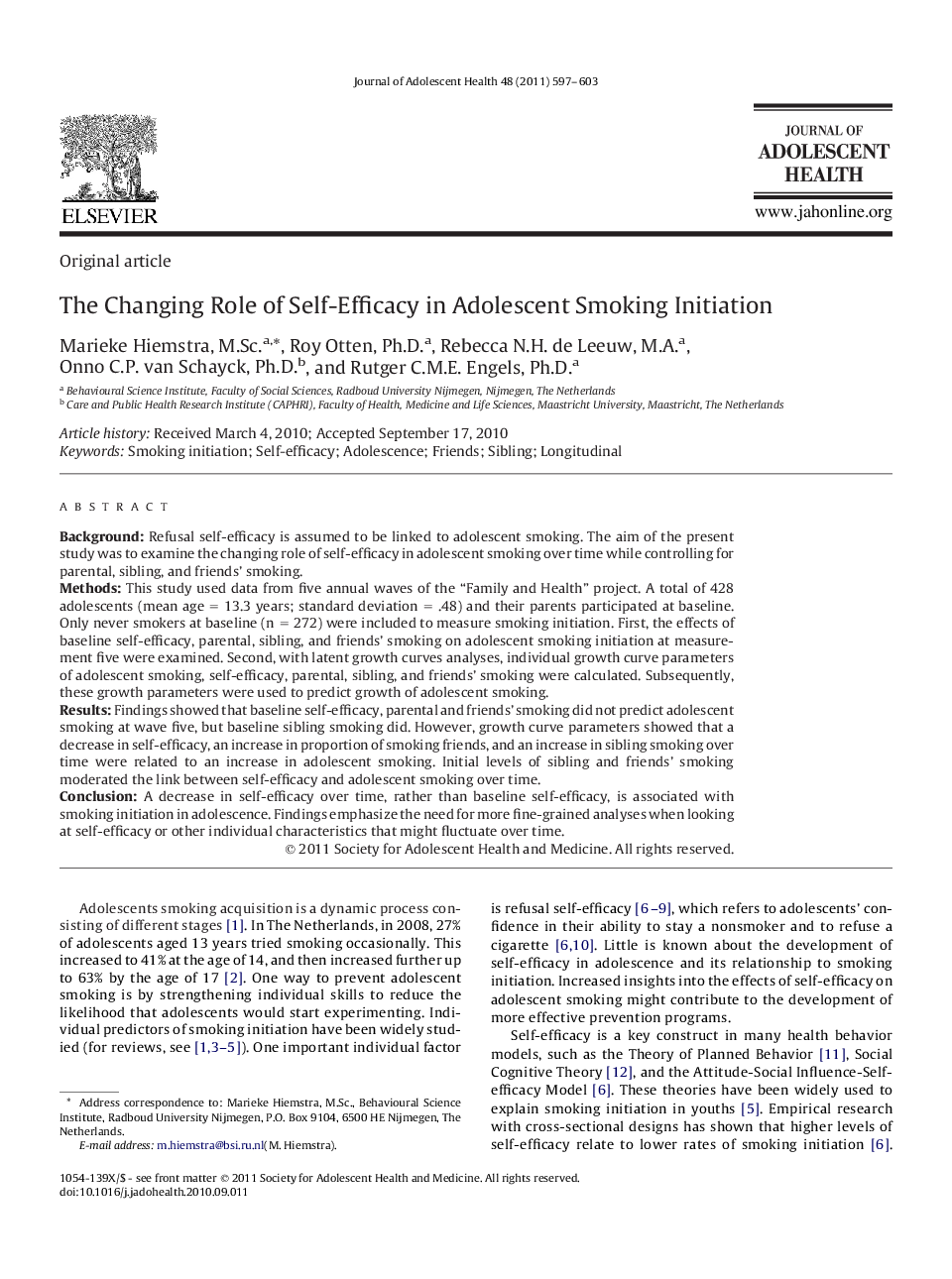| Article ID | Journal | Published Year | Pages | File Type |
|---|---|---|---|---|
| 1079341 | Journal of Adolescent Health | 2011 | 7 Pages |
BackgroundRefusal self-efficacy is assumed to be linked to adolescent smoking. The aim of the present study was to examine the changing role of self-efficacy in adolescent smoking over time while controlling for parental, sibling, and friends' smoking.MethodsThis study used data from five annual waves of the “Family and Health” project. A total of 428 adolescents (mean age = 13.3 years; standard deviation = .48) and their parents participated at baseline. Only never smokers at baseline (n = 272) were included to measure smoking initiation. First, the effects of baseline self-efficacy, parental, sibling, and friends' smoking on adolescent smoking initiation at measurement five were examined. Second, with latent growth curves analyses, individual growth curve parameters of adolescent smoking, self-efficacy, parental, sibling, and friends' smoking were calculated. Subsequently, these growth parameters were used to predict growth of adolescent smoking.ResultsFindings showed that baseline self-efficacy, parental and friends' smoking did not predict adolescent smoking at wave five, but baseline sibling smoking did. However, growth curve parameters showed that a decrease in self-efficacy, an increase in proportion of smoking friends, and an increase in sibling smoking over time were related to an increase in adolescent smoking. Initial levels of sibling and friends' smoking moderated the link between self-efficacy and adolescent smoking over time.ConclusionA decrease in self-efficacy over time, rather than baseline self-efficacy, is associated with smoking initiation in adolescence. Findings emphasize the need for more fine-grained analyses when looking at self-efficacy or other individual characteristics that might fluctuate over time.
